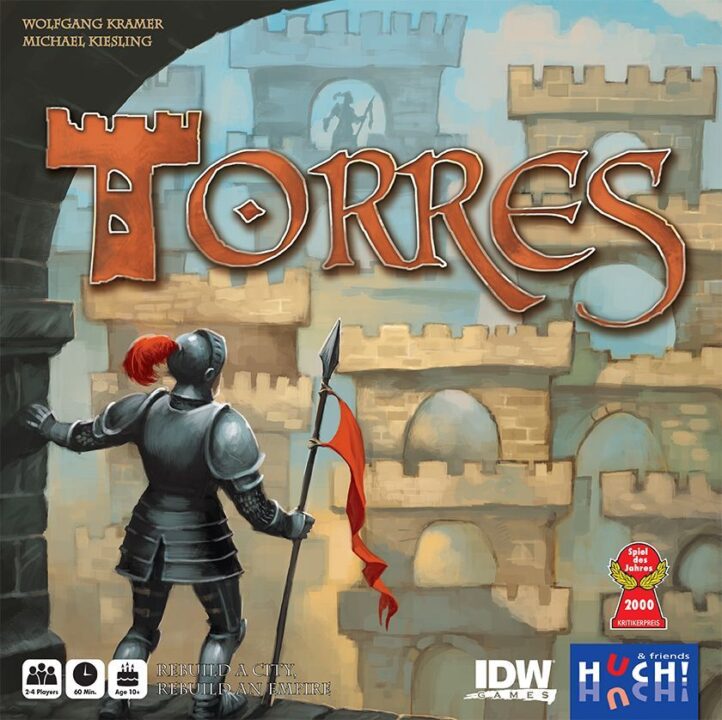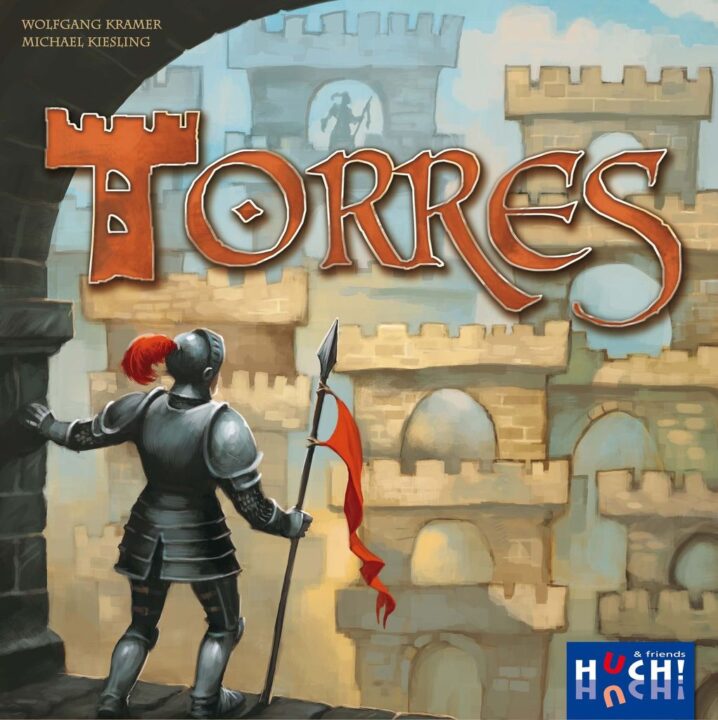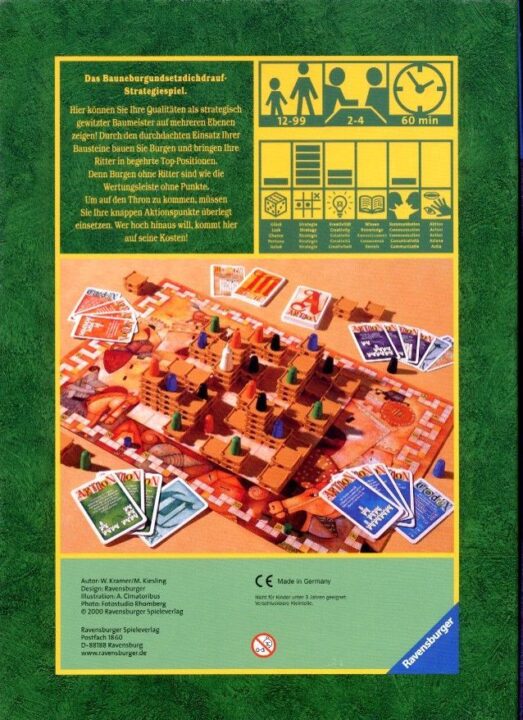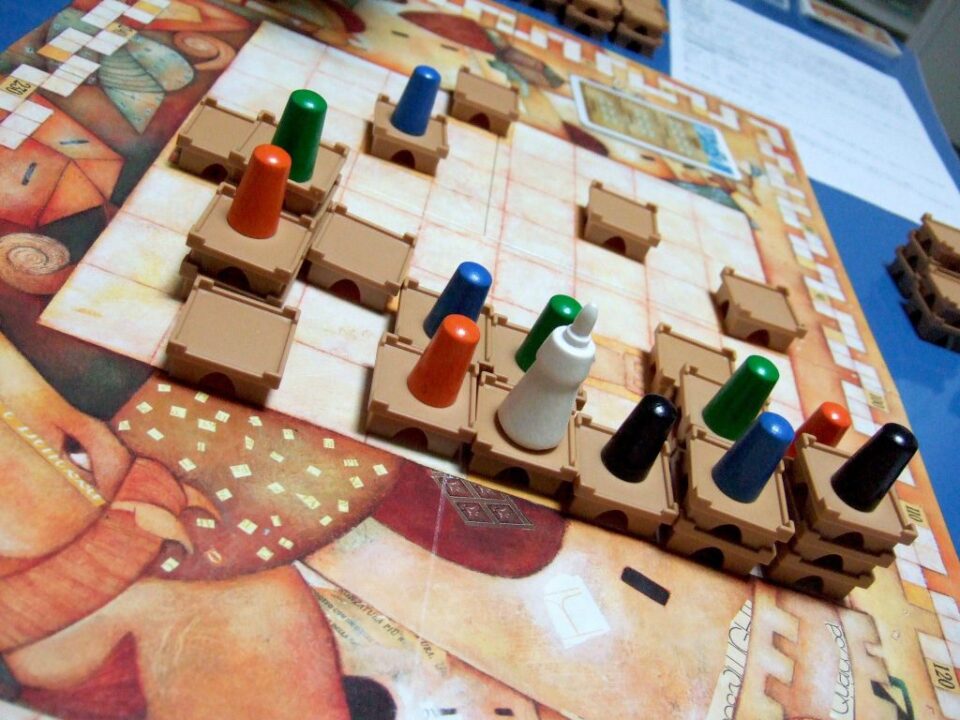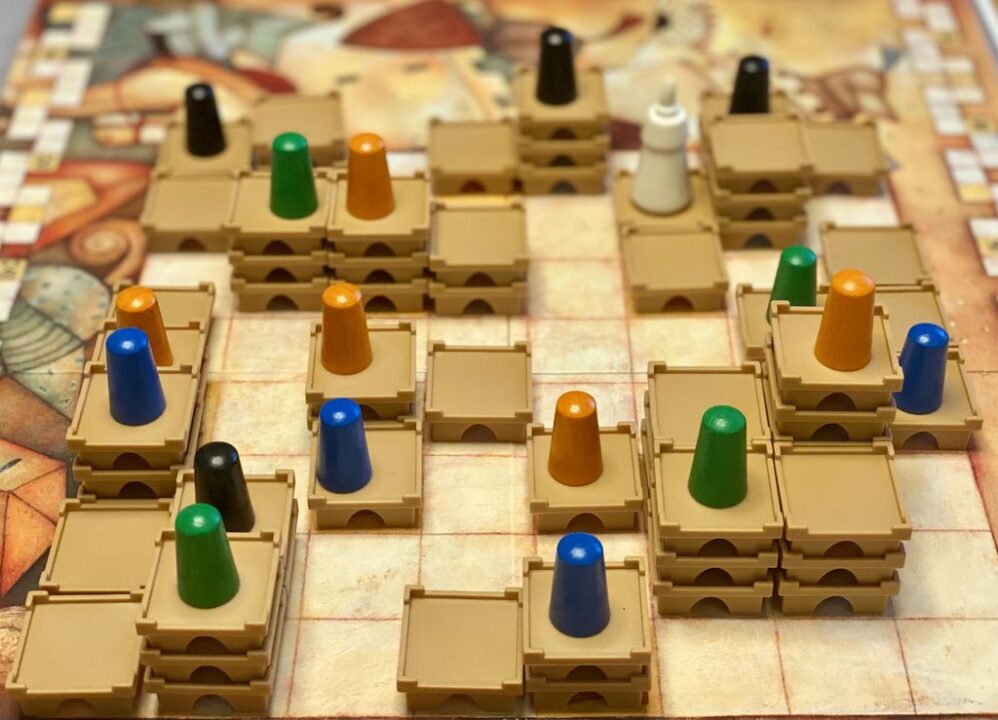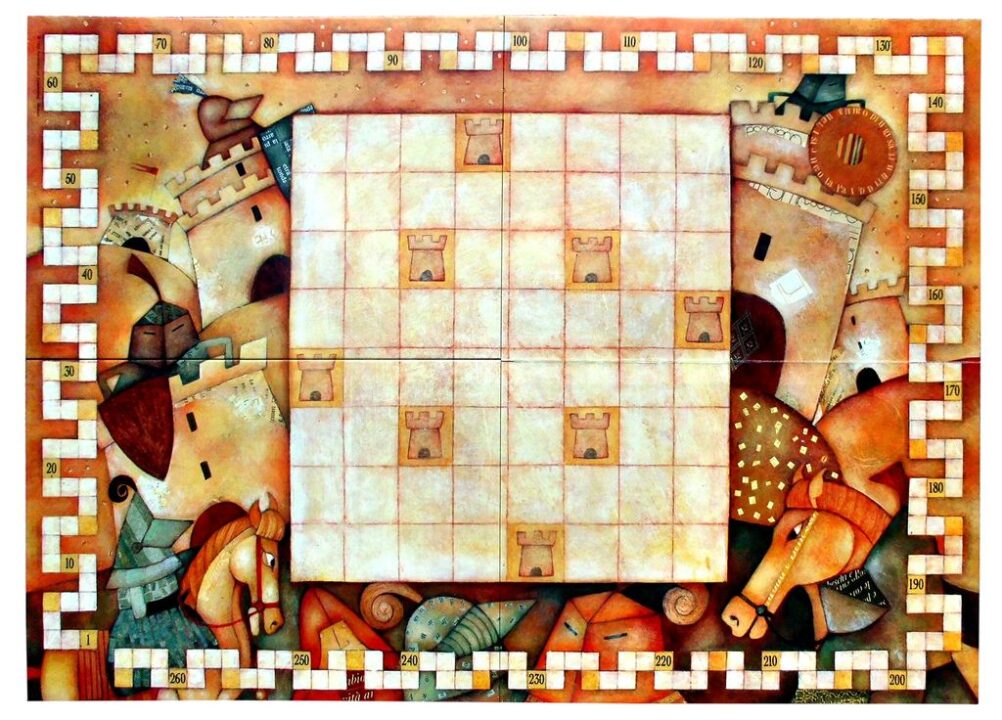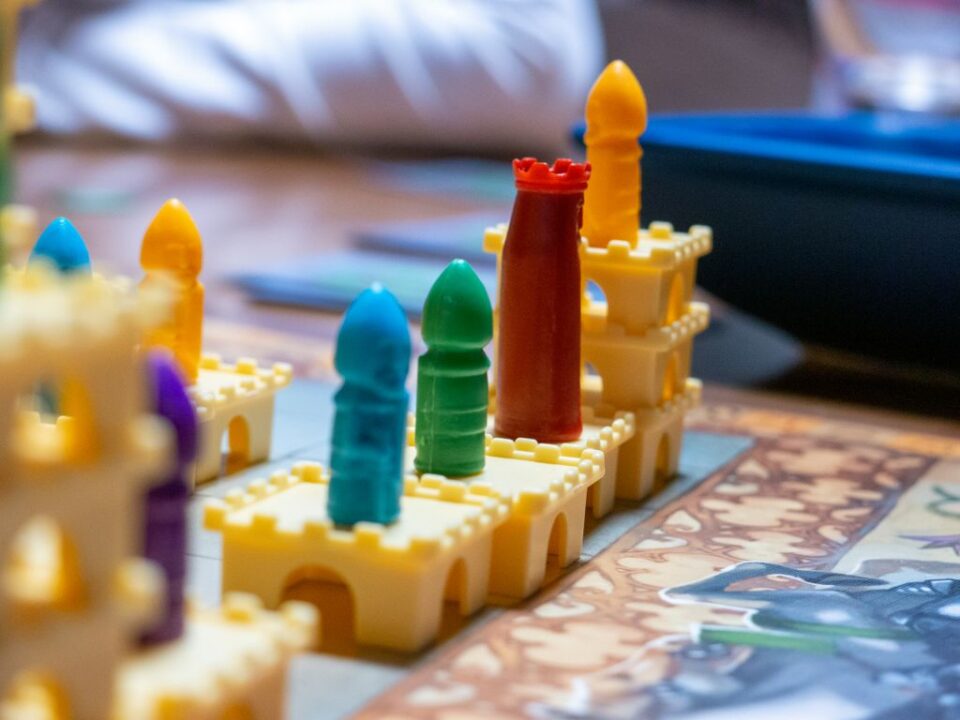Overview
Welcome to my review of Torres, a game where strategic building not only shapes the physical landscape but also defines the competitive tension and excitement among players. As a passionate board gamer, I delve into the intricate mechanics, player interaction, and the fairness of the scoring system within this classic. Join me as I unfold my personal journey through the captivating world of Torres, combining informative analysis with engaging anecdotes.
How It Plays
Torres offers a brilliant mix of strategic planning, tactical movement, and dynamic player interaction, all centered around building and ascending towers to earn points. The game elegantly combines simple mechanics with deep strategic choices, making every match both engaging and thought-provoking. Here’s how you dive into the world of Torres:
Setting Up
To set up Torres, place the game board in the center of the table. Distribute knights, action cards, and score markers according to player colors. Set aside castle pieces and action point tokens. Draw starting action cards, and you’re ready to begin.
Gameplay
Gameplay in Torres revolves around players taking turns to execute actions such as placing or moving knights, building castle pieces, or playing action cards to perform special moves. Players allocate action points to perform these actions, strategizing to optimize their turns for maximum effect.
Winning the Game
The player with the highest score at the end of the game wins. Points are awarded for knights standing on higher tower levels, occupying larger castles, and meeting certain endgame conditions matching the king’s requirements, articulated through specific action cards. Through careful planning and strategic foresight, players compete to claim the virtual throne of Torres.
Want to know more? Read our extensive strategy guide for Torres.
Mastering the Art of Strategic Building Mechanics
Transitioning from novice to adept in the complex world of Torres was a journey filled with surprising twists and relentless competition. Initially, the strategic building mechanics seemed daunting — creating the most efficient structures to earn points while anticipating your opponents’ moves felt like a puzzle wrapped in an enigma. However, through numerous gameplay sessions with friends, I uncovered the layers of depth in these mechanics. One memorable game night, the dynamic completely shifted as I ingeniously blocked an opponent’s move, securing a castle’s top position by a single action. This maneuver, which harnessed both tactical foresight and spatial reasoning, highlighted the strategically rich experience Torres offers.
As we delve deeper into the intricacies of multiplayer dynamics, Player Interaction Dynamics become paramount in scaling the heights of success in Torres.
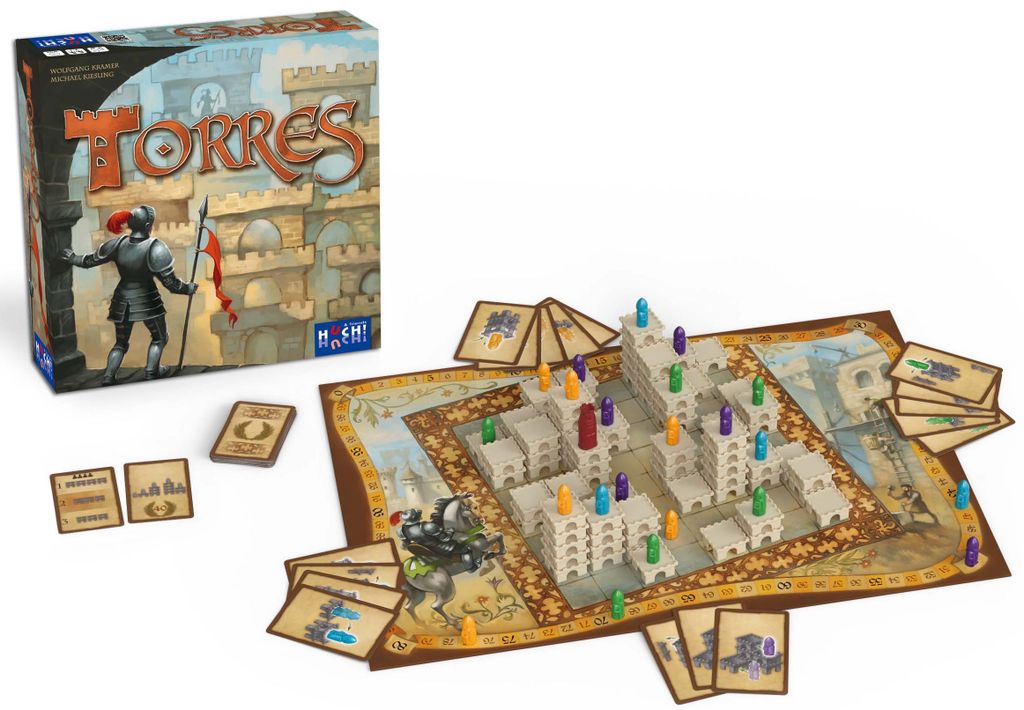
Exploring the Thrill of Player Interaction in Torres
There’s something uniquely exhilarating about sitting down to a game of Torres, knowing that while you are architects of your own victory, the interaction with fellow players often dictates the flow of the game. My heart races recalling a session where alliances formed as quickly as they dissolved, a testament to the game’s dynamic player interaction. The laughter and groans, particularly when someone cleverly positions their knight to block your meticulously planned move, underscore the game’s social aspect.
What struck me most was how each game session felt like a delicate dance. On one hand, you’re trying to outwit your opponents, but on the other, you’re also dependent on them for certain moves. Such moments transformed our game nights into episodes of camaraderie mixed with a friendly rivalry, amplifying the game’s enjoyment factor exponentially.
This blend of cooperation and competition seamlessly transitioned into intricate strategies around the game’s scoring system and fairness, ultimately dictating the path to victory.
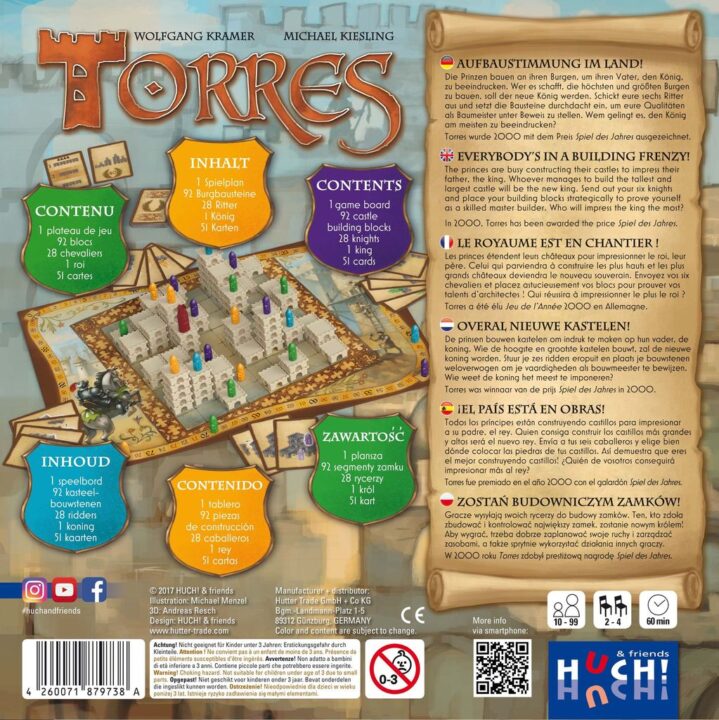
Delving into Torres’ Scoring Nuances
Transitioning to the topic of scoring and fairness in Torres, my journeys through numerous game nights render a captivating narrative. Notably, the game’s scoring system intricately combines spatial strategy with tactical positioning, often resulting in nail-biting finishes. From personal episodes, I vividly recall a game where meticulous planning over several rounds culminated in a last-minute surge to victory, underlining the system’s balanced nature.
Moreover, Torres does an exemplary job at keeping every player engaged by offering multiple pathways to amass points, ensuring no single strategy dominates. This aspect, inspired by countless hours circling our game table, speaks volumes about the game’s inclusivity and fairness. Such experiences foster a competitive yet congenial atmosphere, a testament to the game’s design prowess.
In conclusion, based on its engaging scoring mechanics and equitable play, I wholeheartedly endorse exploring the strategic depths of Torres.
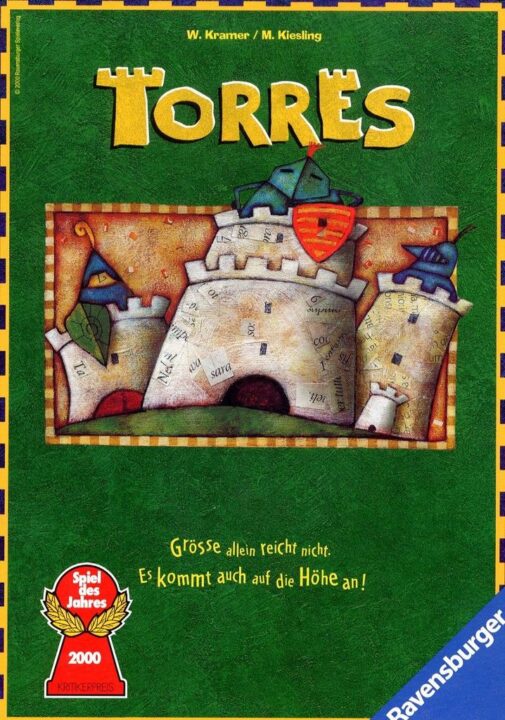
Conclusion
As we conclude our review of Torres, it’s clear that the game’s combination of strategic building, nuanced player interaction, and a balanced scoring system offer a deep and rewarding experience. Through exploring the game’s mechanics and sharing personal anecdotes from gameplay, the richness of Torres has been highlighted from various angles. Be it the strategic depth discovered in building magnificent towers or the engrossing player dynamics that change the course of the game, Torres stands out as a fascinating board game. The fairness of its scoring system ensures that every game is competitive to the very end, making every decision crucial and every victory satisfying. Torres is more than just a game; it’s an engagement of wits, strategy, and social interaction that comes highly recommended for those who appreciate thoughtful and immersive gameplay.

